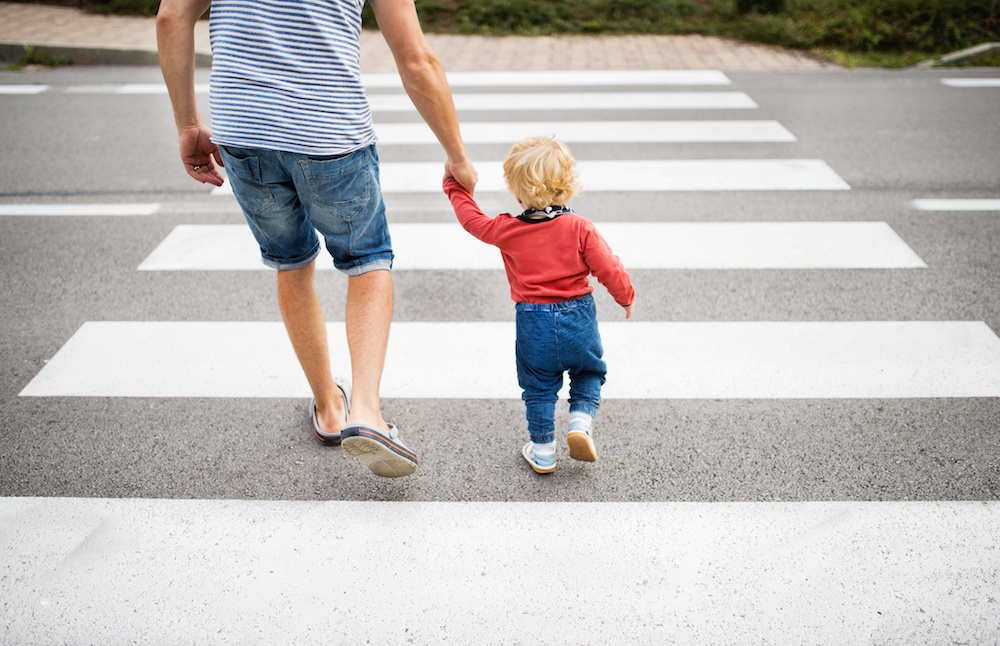Written by Natalya Ganchina M.Ed.
It is hard to imagine our world without motor vehicles. Cars are such a big part of our everyday lives that it is easy to forget what they are: big, heavy machines. Statistics show that children are most at risk of being involved in vehicular accidents while they are crossing the road. In 2015, one in every five children under the age of 15 killed in traffic crashes was a pedestrian.
All parents want that their children to stay healthy and alive. According to CDC data, car accidents are currently the fourth leading cause of death in the U.S. While we cannot always control life’s situations, we can give our children basic skills about behavior on the road that could save their life, starting as soon as they can walk.
The best way to develop those skills is to set a good example and practice together every time you are around cars – whether this is crossing the road, walking near driveways, or moving in a parking lot. A 2001 study shows that there is a difference between children knowing road safety and practicing road safety. Don’t just talk about safety or memorize rules (like “look both ways”): practice them until they are habit.
Every time you walk together near cars, point out what is safe and what is not. Talk about car sounds can you hear, and how close or far they are. Stop at pedestrian lights and crossings, even if there are no cars in sight. Wait until cars come to a complete stop, and check every time you cross the street. Practice walking quickly and with purpose. Even if there are crossing guards near your child’s school, make sure your child knows that they are not automatically safe.
Along with these skills, children should learn why cars are dangerous. They are much bigger and heavier than human beings. You can’t always depend on drivers to follow road rules. If the driver isn’t feeling well, they might not pay enough attention to the road. Drivers might be texting or under the influence of drugs or alcohol, so they are not in full control of themselves or their vehicle. Just one instance where the driver does not follow the road rules could be the moment a pedestrian is in trouble.
It is okay to tell children stories about real road accidents that happened in your area. Children should understand that risky behavior on the road is dangerous and has consequences. Yes, а driver will be punished if they hit a pedestrian, but no punishment to the driver can bring back a lost life.
Teach your children to be aware of cars and traffic as soon as you start walking around together. Show them how to enjoy their time outside while being careful on the roads. Help them take responsibility of their own road safety. It could save their life.
References
Centers for Disease Control and Prevention. (2017). Leading Causes of Death. Retrieved from
https://www.cdc.gov/nchs/fastats/leading-causes-of-death.htm
Centers for Disease Control and Prevention. (2017). Pedestrian safety. Retrieved from
https://www.cdc.gov/motorvehiclesafety/pedestrian_safety/index.html
Zeedyk, MS., Wallace L., Carcary, B., Jones, K., & Larter, K. (2001). Children and road safety: increasing knowledge does not improve behavior. US National Library of Medicine National Institutes of Health, 71(Pt 4):573-94.Retrieved from
https://www.ncbi.nlm.nih.gov/pubmed/11802818/






